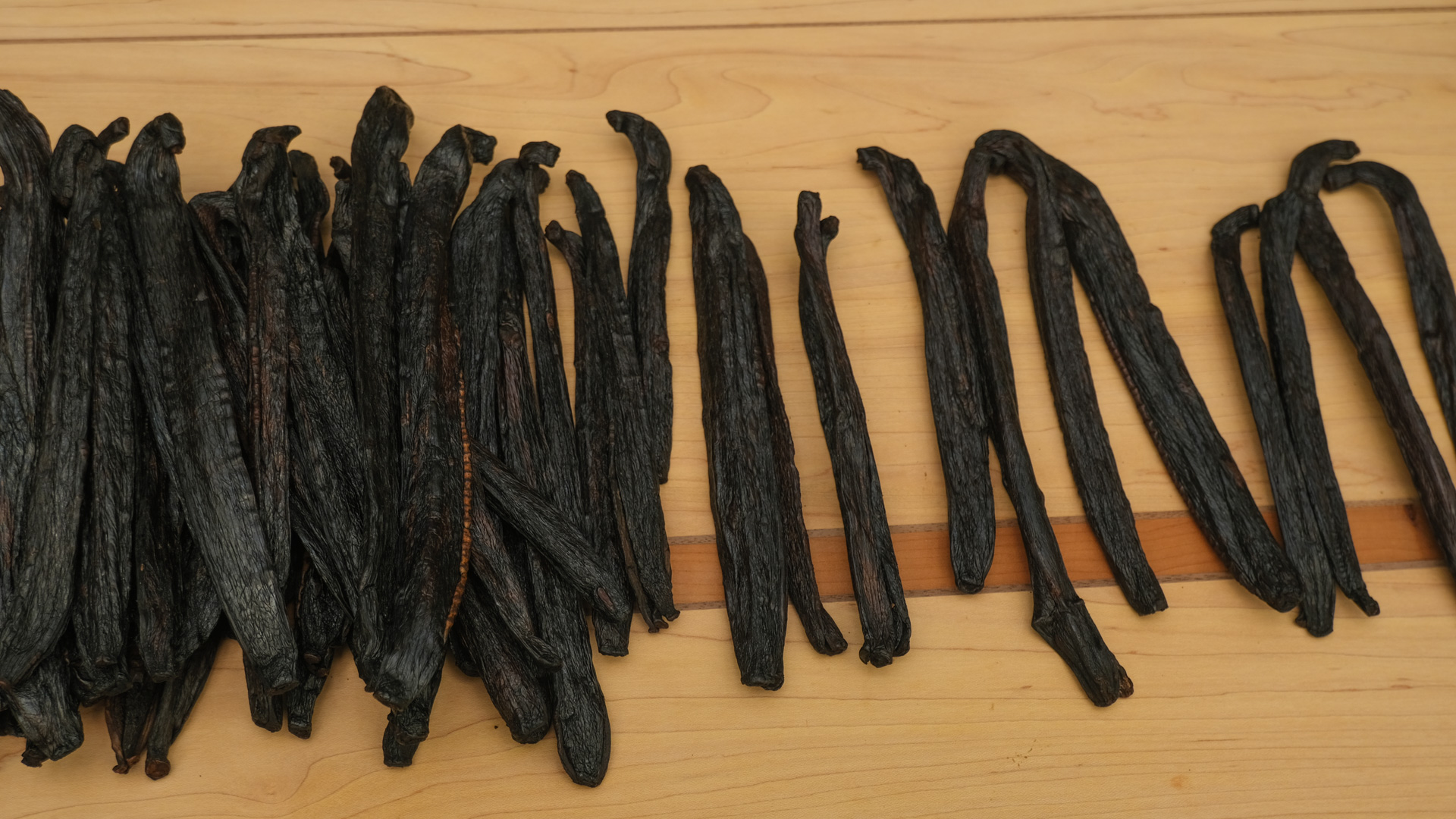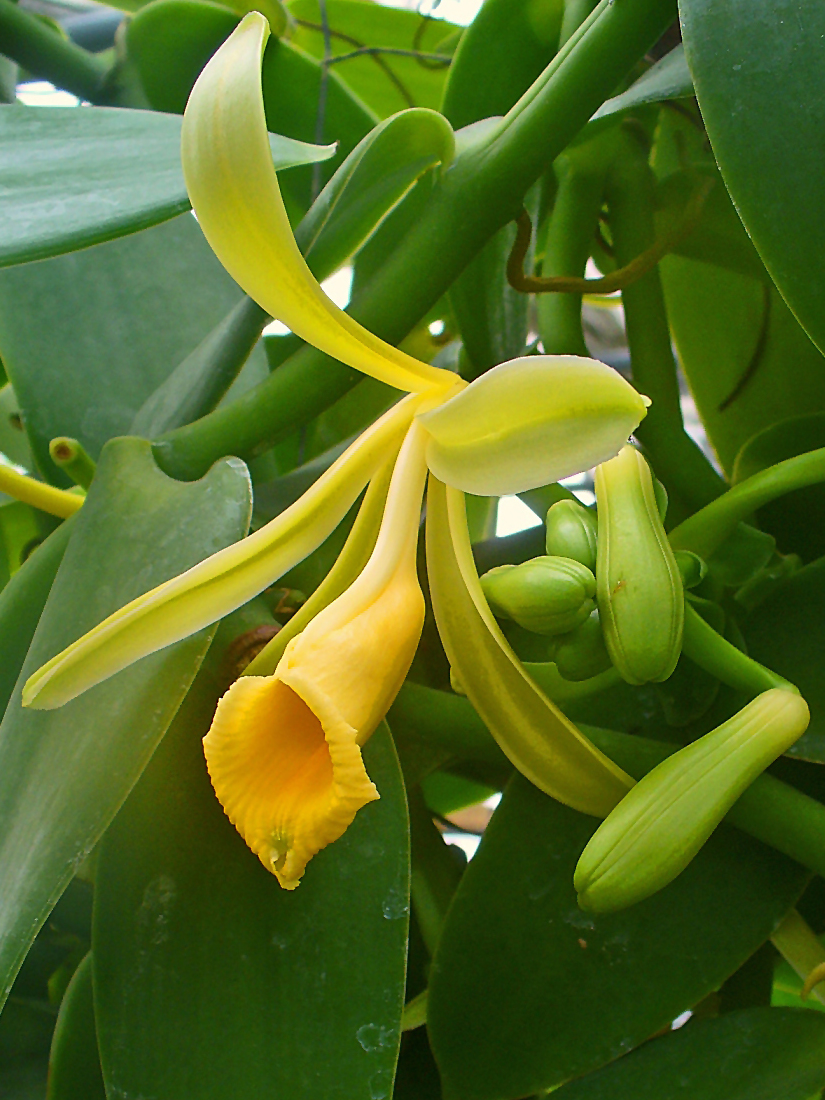

Several years ago, I received an email from a a fellow vanilla grower in Peru named Ashley Britton. We have been exchanging knowledge and experiences since then, and it has expanded my thinking about what vanilla is and how it can be grown.
Ashley is part of an organization called The Amazon Vanilla Project, with a program to support developing vanilla pompona as a cash crop and growing vanilla in the mountainous rainforest region of San Martín in Northern Peru. In that area, the vanilla orchid that is found growing wild is vanilla pompona, a species of vanilla that ranges from southern Mexico through northern South America. That represents roughly the same range as vanilla planifolia, the main species for agriculture, which we grow here on Kauai. San Martín is known for its orchids, and they are featured in the tourism of the area as well as providing a local agricultural product.

Pompona vanilla was the first vanilla to be recorded by westerners and exported as a flavoring. It was grown commercially, but was eventually supplanted by vanilla planifolia because the latter got better yields in a plantation setting. Pompona vanilla remains a widely used flavoring in the regions where it grows naturally: Peru and parts of southern Mexico.
Pompona vanilla is growing in popularity these days as professional and home chefs are exploring the regional differences between vanilla sourced from all across the tropics. Culinarily, the potential for pompona vanilla is only now being explored outside of its geographical range. In my opinion, it is better suited to savory dishes, working especially well with other bold flavors such as smoked, grilled, and deeply caramelized foods.
Sustainable Rainforest Agriculture
Vanilla is a forest plant and requires a biologically rich environment to grow well. It is a valuable cash crop that does not require that the forest be cut down, instead some understory growth is removed and tutors (support trees) are grown using appropriate local trees and the vanilla is grown on those trees. A commercial vanilla farm in this setting just looks like a forest, but with a lot of vanilla growing in it. Vanilla does not require fertilizers, so growing it does not affect the rainforest ecology. It leaves the forest mostly intact so it can go on doing its job of sequestering carbon and oxygenating the atmosphere (among other things of course!).
All aspects of vanilla cultivation and curing are done by hand. This means that vanilla cultivation fits into the lifestyle of the local people. Instead of disrupting their societal structure and culture, it fits into it while providing the needed cash income.
What is Pompona Vanilla Like?
The package of pompona vanilla beans contained an amazing bounty of the characteristically large beans. Each one weighs about 14 grams: compare that to our own Grade A beans at about 9 grams each! They have the familiar shiny, black (very dark brown) wrinkly surface, and have the same dried-fruit suppleness of a well-cured vanilla bean.
The fragrance is certainly like vanilla, but it has its own characteristics: smoky, sweet notes along with the familiar mellowing fragrance that makes vanilla special. Pompona vanilla is high in heliotropin, which has long been used in the perfumery trade, but it is also an important flavoring for foods, and is reminiscent of cherries, cinnamon and, of course, vanilla.
I am offering pompona vanilla for sale in my online shop, so you could have an opportunity to make use of this unique and intriguing flavor and scent.

Where can I get this item?
We have pompona for sale in our online store. Products from the Vanillery
I’m interested to buy Vanilla Pompona cuttings.
+675 71819147 WhatsApp number here.
Email;[email protected]
Hello Roland;
I am using the sweat box I built from the website and I find that after 8–10 days from a heat kill (160F for 3 min) I am starting to get mold on my beans. Since South Florida is 88 degrees F outside with plenty of sun, I have switched to sun during the day, and a towel wrap in a cooler at night. The mold is no longer an issue. The plastic bags of beans in the sweat box at 115 degrees F seem to release too much moisture too quickly. The beans are 9 months old before harvesting so I know the glucovanillin content is good. I know 115 degrees F is going to produce the most vanilla over the 18 day sweat, but I cannot afford the mold which develops in the closed plastic bag. Any suggestions? Would the towel wrap in the sweat box dry the beans out too quickly?
We’ve never had a problem with mold showing up at that stage, so I’m not sure what the cause would be. It sounds like you came up with a good solution, however. Thanks for sharing your experience, it’s helpful to have an alternative method to go to if needed.